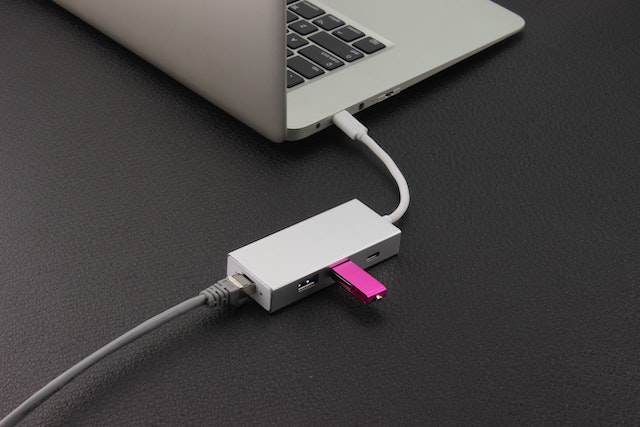Juice Jacking and charging in public places
Have you ever heard about juice jacking attack? what is it? how it’s happened? and how to protect from it?

A shared scenario between many is being in public with a dying mobile device, franticly looking for a charger. When coincidently you find a free charging station calling out your name. You find a solution, but have you ever thought about the risks of using these public charging stations?
The accessibility of these public USB charging stations is convenient but connecting your device to one can put you in a vulnerable position. With just plugging in your smartphone or laptop, you’re potentially opening up an opportunity for a threat actor to steal data or install malware all without your knowledge. This is known as Juice Jacking.
Unfortunately, many are unaware of this type of cyberattack and its associated threats. So, let us dive in to understand the risks of using public USB charging stations.
What is Juice Jacking?
Juice Jacking is “a type of cyber-attack involving a charging port that doubles as a data connection, typically over USB. This often involves either installing malware or surreptitiously copying sensitive data from a smartphone, tablet, or other computer device”. So, as soon as your phone connects to another device, it forms a trusted relationship and pairs with it. Meaning the two devices are enabled to exchange data. So, while charging, the USB cord creates a path into your device that a cybercriminal could exploit. And recently, cybersecurity experts and the FBI have been informing the public of the potential risks of these stations, especially during the holiday season.

With borders opening up and many returning to traveling, the possibility of one being put in a situation where they’re in need of a charger is high. Now, these USB charging stations can be found in airports, malls, and even hotels, and some of these stations may have been compromised by a cybercriminal. But with almost 90% of people experiencing “Low battery anxiety” when their phone battery is less than 20%, this results in a person most likely using the station. Cybercriminals are aware of this, which is they infect USB cables causing two main threats to the victim’s device.
Types of Juice Jacking
–First is malware installation. There are times where an individual may connect their mobile device to a malware–infected USB charging port without realizing. Once the device is connected, the cybercriminal can install adware, spyware, trojans, or in some cases ransomware to the victim’s device without their knowledge. And according to a USB threat report by Honeywell, the rate of malwares transmitted via USB devices climbed from 19% in 2019 to 37% in 2020. Unfortunately, malwares can be difficult to detect, once within the system it disguises itself as a harmless function. But a way to identify if you’ve been infected is when you notice random notifications popping up on your device or if your device is losing battery quickly.
-Second is data theft. A cybercriminal could grant himself access to a phone once connected to a compromised USB cable, and this connection is only visible to the power provider which is the criminal. Meaning, as you’re charging your device, your private data is being transferred to the criminal’s device. Hackers are well aware that our mobile devices contain a plethora of personal information which they can benefit from.
How to Protect yourself
– The best thing to do is to avoid using these public USB charging stations altogether. But in the cases where you’re in critical need of a charger, then use an AC socket plug to charge your device.
– Check that your data-transfer feature is disabled in the settings on your device before connecting to any USB cable.
– Invest in a power bank! They are convenient and a reliable source of power for your device.
– Use a USB passthrough device. It allows for power to pass through but deactivates the data pin on the USB cable, reassuring the user that it’s only charging the device without any data being unknowingly transferred.
In Conclusion
The need for your phone or tablet to be running all the time has become a prime need for individuals. This means you may run out of battery any second while you’re out but that does not justify you connecting your device to a random USB charging station. We truly don’t know as to what the USB cable is connected to, and it may be connected to a threatening individual. The risks associated with these stations are severe. So be smart and bring your own source of power to avoid being a victim to data theft or malware.
Also Read: Mobile Malware: 3 common threats
Be aware and stay safe!
Share this article:
Popular

Revolutionize Enterprise Communication Platform with LinQ2
Revolutionize Enterprise Communication Platform with LinQ2 In today’s fast-paced business environment, enterprise communication platform is the backbone of success. Whether reaching customers, coordinating with employees, or automating notifications, having an effective enterprise communication platform is essential. Cerebra’s LinQ2 stands out as the ultimate solution, offering a multi-channel notification platform tailored for businesses of all sizes. Why Enterprise Communication Platform Is Essential for Business Growth? Efficient enterprise communication platform ensures businesses can stay connected with their customers and teams in real time. Poor communication systems often lead to missed opportunities, customer dissatisfaction, and delays in internal operations. Key Features of LinQ2 ...
11th Mar 2025
Deepfake in Phishing: Challenges and Solutions
In the era of advanced technologies, especially with the explosive adoption of Large Language Models (LLMs) and Generative Artificial Intelligence (GenAI), deepfake has emerged as one of the most significant challenges in cybersecurity. This technology relies on Artificial Intelligence, specifically deep learning and the use of GenAI, to create fake yet highly realistic content that is difficult to detect. Deepfake serves as a versatile tool spanning applications from entertainment to cybersecurity. However, its misuse can pose severe risks, especially in phishing schemes. What is Deepfake? Synthetic media refers to a technology that leverages deep learning algorithms to create ...
19th Dec 2024
AI Governance: Opportunities and Challenges in Cybersecurity
AI Governance: Opportunities and Challenges in Cybersecurity With the increasing reliance on AI technologies in various fields, AI Governance has become a key factor to ensure system integrity and data protection. This governance plays an essential role in enhancing confidence in modern technology and ensuring that it is used responsibly. It has been almost two years since OpenAI’s ChatGPT went viral, igniting widespread interest in artificial intelligence (AI) and setting off a wave of technological and investment growth in the field. Academic and technical investments in artificial intelligence: The advancements in AI since then have been staggering, with exponential increases ...
14th Nov 2024
Cyber Warfare Unveiled: Tracing the Journey from Espionage to Digital Combat
“Cyber Warfare: From Espionage to War A Journey Through Time” With the massive technological advancements, the boundaries of warfare have expanded to encompass cyberspace, where “cyber warfare” has emerged as an increasingly serious threat to individuals, institutions, and countries. The line between cyber and traditional wars has blurred for a while but recent activities in the region made it clear that cyberwars is becoming a dangerous and can lead to harming humans. In this blog, we will dive into a journey through the world of cyber warfare, seeking to understand its nature, history, impacts, types, evolution, and some solutions to ...
9th Oct 2024
Keeping Our Kids Safe Online
A Guide For Keeping Your Kids Safe Online Parents and all who are concerned about the well-being of our young kids in this digital world. Today we will discuss a topic of utmost importance: digital safety for kids. Yes, the Internet can be a very dangerous place for our young kids , especially with the spread of phishing scams. So, let us dive deeper and present to you, in this comprehensive article, a comprehensive guide on digital safety for kids. What every parent needs to pay attention to. Internet risks for kids: The internet has become a big part of ...
17th Jul 2024
Could you be hacked through Slack?
Could you be hacked through Slack? The usage of collaboration platforms such as Microsoft Teams and Slack has significantly increased, with nearly 80% of employees utilizing them. These platforms are designed to be convenient and easily manageable for daily conversations within organizations. However, what makes them easy and convenient also renders them vulnerable to cyber threats and attacks. In 2021, for instance, 780 gigabytes of data from the gaming giant Electronic Arts (EA) were breached through Slack! During the same year, a security vulnerability in Microsoft Teams was exploited to launch a widespread cyber attack on ...
12th Jun 2024
Tips To Be Cyber Protected While Traveling
Goodbye worry! A safe journey in the digital world With all the modern wonders of the digital world, we trust communication technologies on our journeys. There is no doubt that the travel experience is always more beautiful and enjoyable, but it can also pose a range of risks, especially when it comes to cybersecurity. Travelers may fall victim to phishing, Wi-Fi network spying, and theft of their personal data, which can make their journey filled with worries and tension. With the increasing prevalence of cyber threats, it is essential for travelers to follow some guidelines to protect their devices and ...
1st Apr 2024
Push Authentication: A New Era in Multi-Factor Authentication
Want To Say Goodbye To Passwords and OTP Codes? Discover Push Authentication! It is easy for your password to be compromised through phishing attacks, even if it meets the cybersecurity strong password standards and is difficult to predict So we must get to know the technique of Push based Authentication. Some may recommend that you use Multi-Factor Authentication (MFA) to increase your security. Multi-Factor Authentication (MFA): MFA is the process of logging into your account through multiple steps. It requires you to enter more information, not just your password. But there is another obstacle that arises when using such ...
14th Feb 2024
The Difference Between Phishing Attacks
The Difference Between Phishing Attacks Phishing attacks are harmful attacks used by criminals to steal personal and financial information from individuals and businesses. Attacks on individuals and businesses are becoming more common as we use the internet and technology more often in our daily lives. Phishing attacks involve the use of dishonesty and fraudulent methods to fool consumers into believing they are interacting with the trustworthiness of an unsuspecting destination, such as banks, email companies, or social media platforms. But what is the difference between phishing attacks? How can individuals and organizations protect themselves from such attacks? That is what ...
17th Jul 2023









